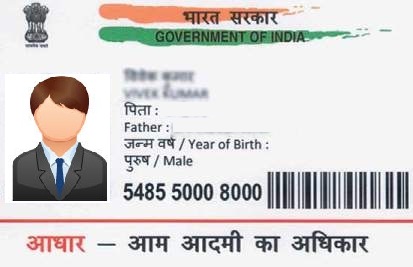India is nearly there in an open database system where everyone’s identity information (name, address, date of birth, photograph) is stored in an open system. Think about it, how you would feel if it really happens in India. Yes, it is true and India has already prepared for that. A system, new tech start-up recently launched a web-based home page with one of the more frightening images on the Internet database. At the first glance, it will look like a wide-angle street scene shot in black and white at a busy market. But some of the individuals in that table are singled.
Target boxes underneath their passport size photograph face listed their Aadhaar numbers, names, mobile numbers, residential addresses, dates of birth and emails with some salient details blanked out. It says it can verify PAN, check police records, employment history, do ID checks, registered vehicles and much more by linking individuals’ data, documents and ‘incidents’ to their 12 digit Aadhaar numbers. These checks always will be consent-based. The targeted employee or applicant will sign a form allowing data verification and also input one-time passwords to the Unique Identity Authority of India (UIDAI) database.
According to the Aadhaar Act, a person’s “identity” has 2 components; one is demographic information and another is biometric information. Demographic information includes the detail information includes- the name, date of birth, address, emails and other relevant information of an individual, collected when an individual’s Aadhaar number is issued. Demographic information includes a few specific details, such as caste and religion, but obviously, it is basically whatever the government decides. The Aadhar Act allows the Govt. to require you to inform the UIDAI if your demographic information changes.
This Aadhar Act also uses the concept of “core biometric information,” which has been defined in the same way except that the word “photograph” is not there. The boundary between biometric information and core biometric information can be modified by the govt. except that core biometric information must include fingerprints and iris scan.
However, in the Act, authentication is a completely different thing. When it submits an Aadhaar number, the “requesting entity/individual” can ask for any aspect of that individual’s identity information, except for those core biometric information. Everything else, including photograph, can be shared by Unique Identity Authority of India (UIDAI) with the requesting entity.
There are two safeguards are in place in this Aadhaar Act. One is that the requesting individual must inform you regarding the use it proposes to make of your identity. But it is very difficult to read all the terms and conditions when buying a mobile sim card, or before clicking “I agree” while installing a new software. Another safeguard is that the requesting entity/ individual cannot publish or display your Aadhaar number or core biometric information, as long as it has informed the concerned person.




